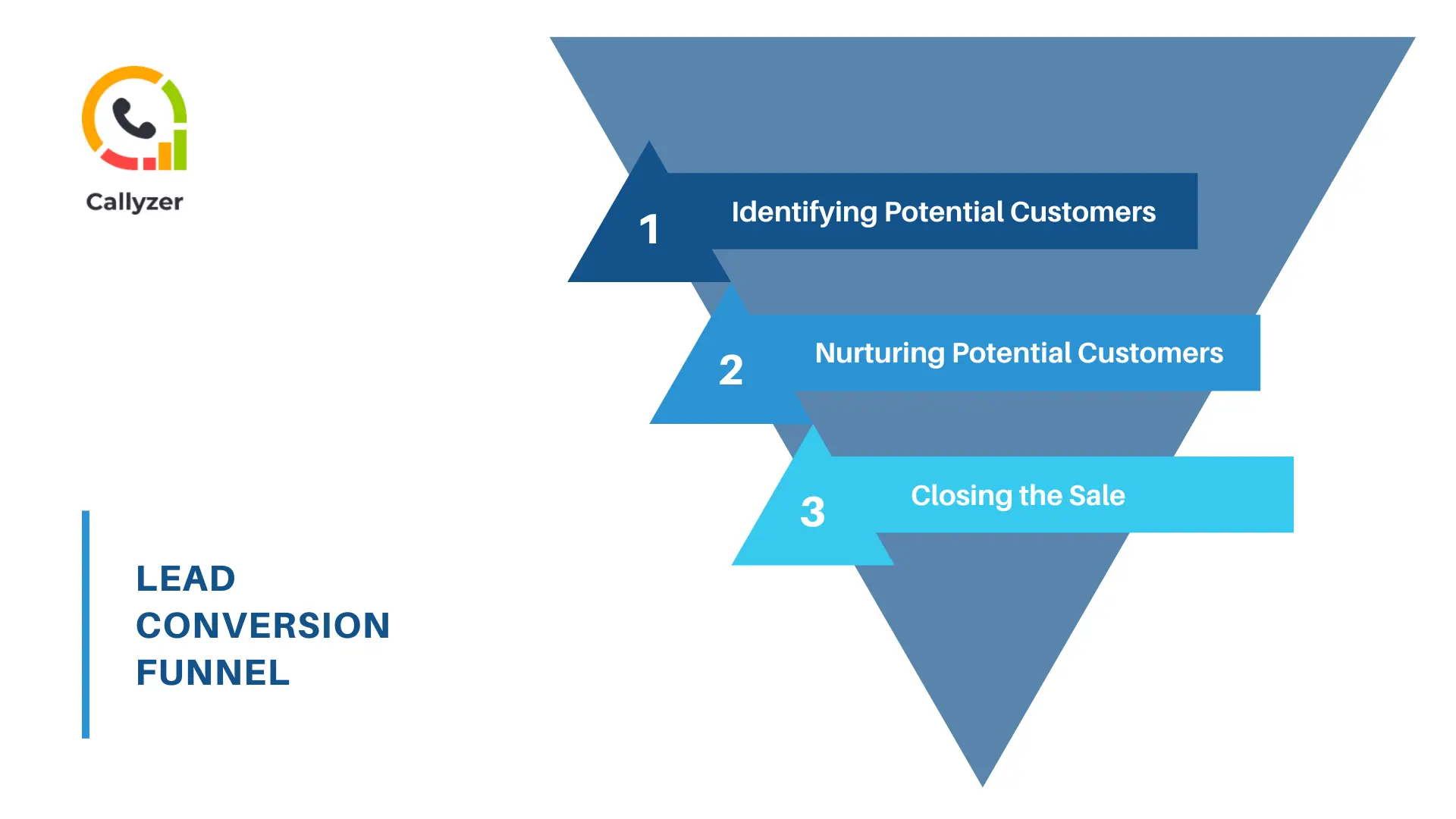Turning new leads into loyal customers is a critical goal for any business, but achieving it requires more than just a sales pitch.
Today’s customers expect a personalized, relevant, and seamless journey that addresses their unique needs at every stage.
To convert more leads effectively, businesses must employ smart strategies that build trust, engage interest, and demonstrate real value.
This blog uncovers five tried-and-tested techniques that go beyond the basics, offering deep insights into transforming your lead conversion process and boosting your conversion rates.
We’ll dive into powerful methods like data-driven lead scoring to prioritize high-potential leads, crafting value-focused content that resonates with each segment, and implementing a robust follow-up process that keeps prospects engaged without overwhelming them.
What is Lead Conversion?
Lead conversion refers to converting a prospect or potential customer into a paying customer. In other words, it is converting inbound or outbound leads or inquiries into sales revenue. Lead conversion aims to close sales, increase revenue, and drive customer loyalty.

The process involves several stages, including identifying potential customers, nurturing them through the sales funnel, and closing the sale. Lead conversion requires effective communication, a deep understanding of customer needs, and building trust and rapport. Successful lead conversion strategies can help businesses grow, increase their customer base, and improve their bottom line.
How to Calculate Lead Conversion Rate?
Calculating the prospect conversion rate is an important aspect of measuring the success of any marketing or sales campaign. The prospect conversion rate is the percentage of leads converted into actual customers.
To calculate the prospect conversion rate, divide the number of converted leads by the total number of leads and multiply the result by 100.
For instance, if you have 100 leads and 20 become paying clients, your lead conversion rate would be 20%.
A high conversion rate is indicative of an effective sales and marketing strategy. However, it is essential to note that the lead conversion rate can vary based on several factors, such as the quality of leads, the sales process, and the industry.
Measuring and tracking lead conversion rates regularly can help businesses make informed decisions, identify areas for improvement, and optimize marketing and sales team efforts.
Top Tips to Convert Leads and Skyrocket Your Conversion Rate
Increasing lead conversion rates is a top priority for businesses of all sizes.
According to HubSpot, the average website conversion rate is only 2.35%. This study means that out of 100 visitors, only 2 or 3 will convert into customers.
Effective Lead conversion process is essential for businesses looking to increase their revenue and grow their customer base. Companies need a very strategic approach to managing leads and converting them into paying customers.
Let's discuss practical tips to improve your lead conversion rate and boost your sales and marketing efforts.
#1: Invest in a Telecalling Lead Management Software
Investing in telecalling lead management software is becoming increasingly important for businesses. This software allows businesses to nurture leads more efficiently and optimize lead conversion.
With telecalling lead management software, companies can automate their lead management process, track and analyse lead behaviour, and communicate with leads in a personalised and targeted manner.
Additionally, the software provides valuable insights into lead demographics, behaviour patterns, and preferences, allowing businesses to tailor their sales and marketing efforts accordingly.
Telecalling lead management software like Callyzer provides multiple features that benefit in increasing lead conversion. Callyzer can help businesses improve their lead conversion rates in several ways:
- The lead management feature allows businesses to organise their leads and track their progress through the sales funnel. This feature helps companies to identify the most promising leads and prioritise their sales efforts accordingly.
- The call recording and analytics features allow businesses to review and analyse their sales calls, identifying areas for improvement and optimising their sales approach.
- The application provides real-time feedback on call performance, allowing sales representatives to adjust their approach and improve their effectiveness.
- Callyzer offers detailed call log analytics, making it easy to track which leads have been contacted and which haven't. This feature ensures no leads are overlooked, giving your team complete visibility into the outreach process.
Moreover, Callyzer can also help businesses improve their customer engagement and build stronger relationships with leads.
#2: Create a Lead Qualification Process
Creating a lead qualification process is essential to achieve sales targets consistently.
This process involves identifying and prioritising the most promising leads based on specific criteria such as demographics, behaviour, and needs.
By qualifying leads, businesses can focus their sales efforts on the leads with the highest potential for conversion, saving time and resources. Lead qualification typically involves several stages, including lead generation, scoring, and nurturing.
The first step in creating a lead qualification process is to identify the criteria that will be used to qualify leads.
Then the next step is to develop a lead scoring system, which assigns a numerical value to each lead based on their characteristics and behaviour.
Leads with higher scores are considered more promising and prioritised in the sales process.
Finally, the lead nurturing stage involves building relationships with leads through targeted communication and personalised content to move them closer to making a purchase.
By creating a lead qualification process, businesses can improve their lead conversion rates, increase efficiency, and achieve their sales and marketing goals.
#3: Nurture Qualified Leads
The goal of lead nurturing is to keep leads engaged and interested in the business's products or services and to gradually move them closer to making a purchase.
Effective lead nurturing involves providing leads with valuable information and resources that address their pain points and needs.
Sales reps can nurture qualified leads through various channels, including telecalling, email marketing, social media, webinars, and events.
Personalization is key to effective lead nurturing, and businesses should tailor their communication and content to each lead's specific needs and preferences.
By providing relevant and valuable information to leads, companies can establish themselves as thought leaders in their industry and build trust and credibility.
Lead nurturing also helps businesses stay top of mind with leads, increasing the likelihood that they will choose the business when they are ready to purchase.
#4: Map Out Key Follow-up Points
When it comes to lead conversion, it's essential to have a clear follow-up plan. The first step is to map out key follow-up points in the process. This process involves identifying the critical touchpoints where you'll interact with the lead and create opportunities for conversion.
It could be after the initial inquiry, after a demo or consultation, or after sending a proposal. At each of these touchpoints, you need to have a clear goal, such as scheduling a meeting, getting a commitment, or addressing any concerns the lead may have.
It's also crucial to have a system to track and manage follow-up activities, such as a CRM like Callyzer or a sales pipeline. Callyzer helps you to filter leads that you need to follow up on. With their efficient call tracking feature, you can gauge a clear pipeline of which leads should be prioritised by telecaller. Also, the software facilitates you to add a note after each call, which helps you to recollect the conversation.
By mapping out these key follow-up points, you can stay organised, ensure timely and consistent follow-up, and increase your chances to convert more telecalling leads
#5: Use Tested Opening Lines & Sales Scripts to Overcome Objections
In sales, objections are a common occurrence that can derail even the most promising deals. One effective way to overcome objections is to use tested opening lines and sales scripts. These scripts are designed to address common objections and provide compelling responses that can help to convert more telecalling leads and move the sales process forward.
For example, if a prospect is concerned about the price, a sales script could address the value proposition and demonstrate how the product or service can save them money in the long run.
Similarly, if a prospect is hesitant about making a decision, a sales script could highlight the benefits of taking action and the risks of inaction.
The key is to personalize these scripts based on the specific overcoming objections and needs of each prospect while also relying on tested and proven responses that have worked in the past. These scripts allow sales professionals to effectively address complaints, build trust, and ultimately close more deals.
Takeaway
Effectively managing sales leads is crucial for any business aiming to grow its customer base.
The goal is to convert leads into customers, which involves a systematic approach to enhance the lead conversion process.
Utilizing a robust lead management system can dramatically improve your chances of turning a lead into a customer. To achieve this, businesses should focus on ways to convert leads by applying specific tips to convert leads.
A well-structured plan will ensure that leads are more likely to convert leads into sales, thus resulting in a good lead conversion rate, ultimately turning prospective customers into paying customers.
To maintain control of your lead conversion, it's essential to monitor key conversion metrics. Identifying which leads will convert can streamline your approach and help you focus on prospects that are likely to convert.
Implementing lead-to-contact filters can refine your targeting and enhance your strategy for enhancing lead conversion. By leveraging effective sales tools and understanding the nuances of the market, businesses can successfully convert your leads into customers, turning them into valuable assets that drive sustained growth.

